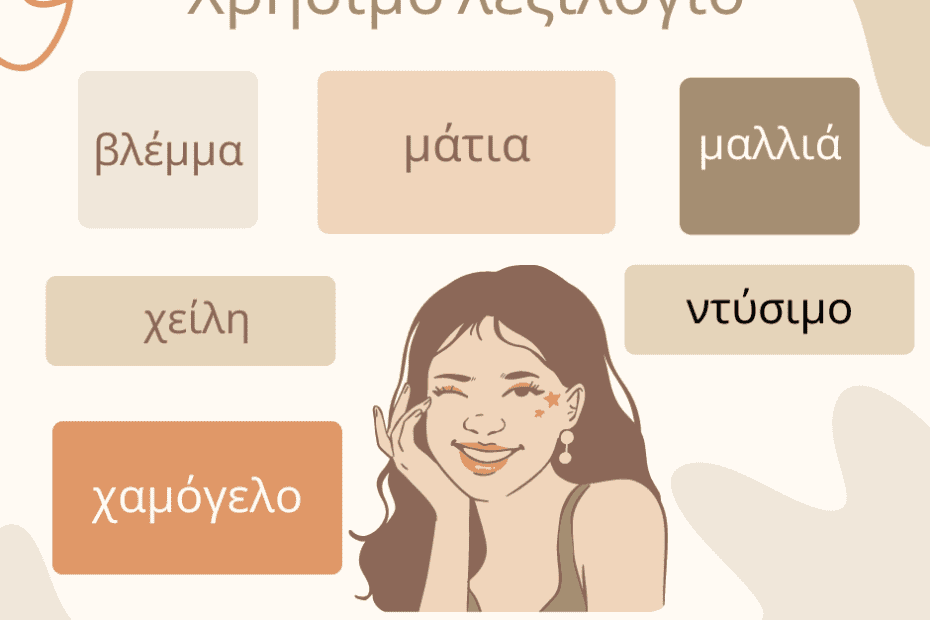Today we will talk about one’s appearance: look, eyes, hair, lips, smile and clothing. It is always handy to have a couple of adjectives in your pocket and use them while describing a person on a picture during the speaking exams.
Look
Look – «το βλέμμα» (to vléma) can be described as «αποφασιστικό» (apofasistikó) in a sense of “decisive”, «σαγηνευτικό» (saghineftikó) as a “captivating”, and as «απλανές» (aplanés) meaning “expressionless”.
Eyes
Eyes – «τα μάτια» (ta mátia) can be described as «αμυγδαλωτά» (amigthalotá) meaning “almond-shaped”, «ανοιχτόχρωμα» (anihtóhroma) or «σκουρόχρωμα» (skuróhroma) that is “light-coloured” and “dark-coloured” correspondingly, and «μελαγχολικά» (melagholiká) meaning “melancholic”.
Hair
Hair – «τα μαλλιά» (ta maliá) can be «σγουρά» (zghurá) that is “curly”, «ίσια» (ísia) that is “straight”, or «ταλαιπωρημένα» (taleporiména) that is “damaged”.
Lips
Lips – «τα χείλη» (ta híli) can be described as «σαρκώδη» (sarkóthi) meaning “fleshy” or «καλοσχηματισμένα» (kaloshimatisména) that is “well-shaped”.
Smile
Smile – «το χαμόγελο» (to hamóghelo) can be described as «πλατύ» (platí) that is “wide”, «συγκρατημένο» (sigkratiméno) meaning “restrained”, and «πονηρό» (poniró) meaning “cunning”.
Clothing
Clothing – «το ντύσιμο» (to ntísimo) can be described as «κομψό» (kompsó), that is “elegant”, «συντηρητικό» (sintiritikó) that is “conservative”, «εκκεντρικό» (ekentrikó) as “eccentric”, and «καθημερινό» (kathimerinó) as “daily”.
If you’d like to practice some other vocabular handy for oral exams, check our article about describing morning routine.
